Johannesburg, South Africa
Our thanks to Marc Latilla for allowing us to use these images and text extracted from his blog.
Click on image at bottom of this page to view his blog.
President St Synagogue
The first Jewish religious service in Johannesburg is said to have been held in a store owned by a Mr. Weinstein which was on the corner of Market and Harrison Street. The first service for high holidays in 1887 was held in the original Rand Club in Commissioner Street officiated by Rabbi Joel Rabinowitz.
The first synagogue in Transvaal was the President street Synagogue erected in 1888/9. It was one of the first brick buildings in Johannesburg and designed by Read & McCowat and built by Mr. Rowe. The foundation stone was laid by E. Mendelssohn on 24 September 1889 but was apparently dated November 1888. At the time of completion there were approximately 100 Jews in Johannesburg. The synagogue faced south on President street and was between Kruis & Von Brandis Streets..
Interior of the President Street synagogue
Second synagogue was meant to be in End Street near Davies Street. The foundation stone was laid in 1906 but the temple was never finished. In 1915 amalgamation of various Jewish congregations took place and the stone was transferred to the Wolmarans Street Synagogue or Great Synagogue as it’s known. The unfinished second building was amalgamated with End Street convent.
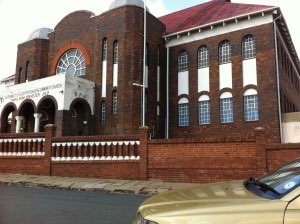
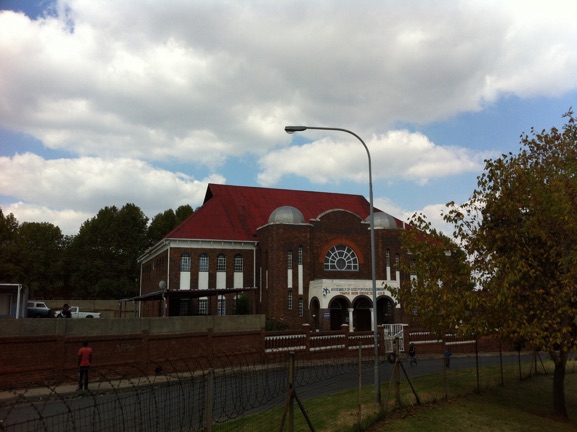
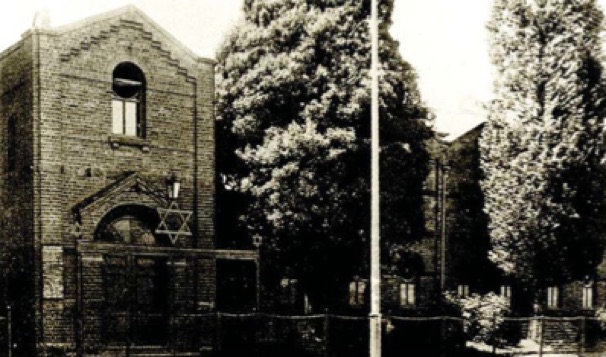
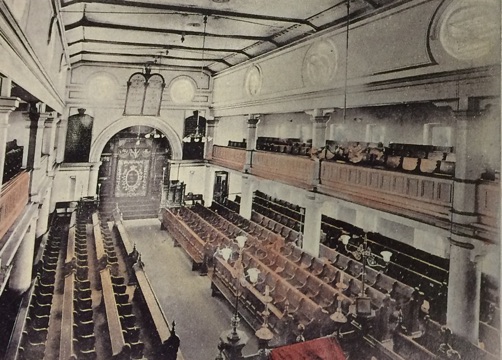
Synagogue on Smit Street
Above are plans to a proposed Synagogue for the Braamfontein Hebrew Congregation on the corner of Smit and Loveday Streets. I’ve not come across any other information on this building but will update when I do. According to the plans it was designed by S. Isaacs and dated 1919.
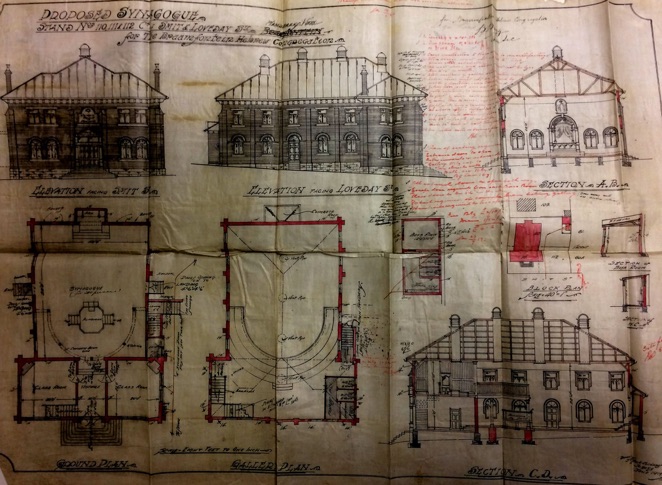
Bertrams Synagogue
Like Doornfontein, Bertams had a massive Jewish community due to the influx of immigrants as explained in the piece below:
Despite such official anti-Semitic immigration sentiments, between 1924 and 1930 there was a noticeable rise in the immigration of Jewish refugees from Lithuania, Poland and Latvia to Johannesburg (Adler 1979:71). That a high percentage of these immigrants settled in the eastern suburbs of Johannesburg is clear from a 1936 survey which listed Doornfontein, Bertrams and Jeppe as home to the single largest Jewish community on the Witwatersrand (ibid). What makes this significant is that almost twenty percent of workers in the area were manual labourers (ibid, 72). This was predominantly then a community of workers, not owners.
“Thus it can be established that between 1920 and 1940 there was a concentration of Jewish immigrant workers living in the Johannesburg suburbs of Doornfontein, Bertrams and Jeppe. Their greatest significance however lies in the fact that they were immigrants and that a large proportion of them were manual labourers of the artisan class” (ibid, 74).
As the second generation of better educated and entrepreneurial Jews moved away from Bertrams to the northern suburbs, the usage of the Shuls and Synagogues in the areas dropped. The Bertrams Synagogue (also known as the Kimberly Road Shul) at 54 Kimberly Road closed in 1984 and is now a private residence.
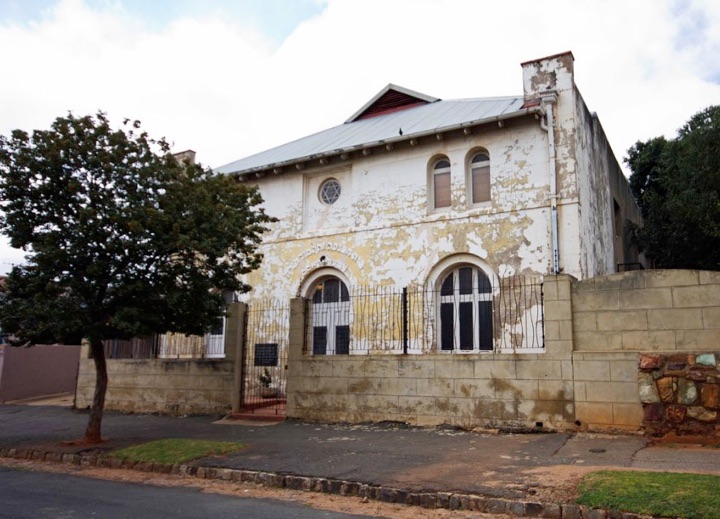
The Lions Shul
Doornfontein was a popular early sanctuary for the well-off Western European Jews. As they moved off to more exclusive and better sheltered suburbs like Parktown in the late 1890s, they were replaced by a strong working middle class Jewish community. Many of the big mansions were torn down (Windybrow being the only remaining mansion on that side of the suburb) and the land subdivided into smaller plots on which new houses were built to house the growing population. In the 1920s, rising anti-Semitism and falling property prices forced the middle class to re-locate east to Yeoville & Orange Grove. They were in turn replaced by a lower class of Jew that could not afford to go anywhere else and Doornfontein remained for some time after ‘the lowest rung of the Jewish residential ladder’.
Margot Rubin has written a very detailed and insightful piece on the Jewish movements in and around Doornfontein in THE JOBURG BOOK which is where I got my info.
Above are pictures are of the Lions Shul in early 1900 and 2011. Note the houses to the left that still stand (below). The Shul was almost burnt down in 1932 but was fortunately rebuilt. It is the oldest surviving Shul in Johannesburg. The other houses and buildings pictures are in walking distance from the Shul behind where the University of Johannesburg (old WITS TECH) stands.
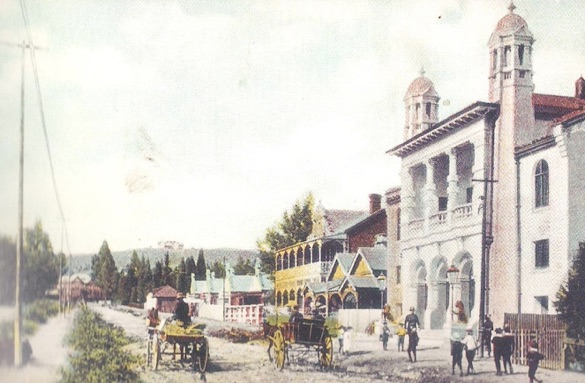
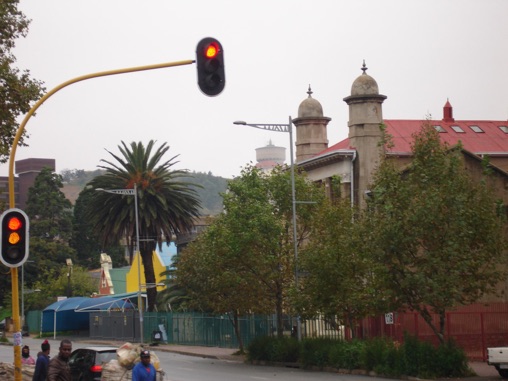
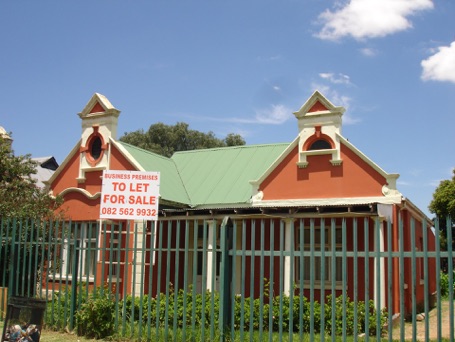
Braamfontein cemetery
The first Jewish burial was for Albert F W Rosettenstein who was 39 when he died on 12 May 1887. It is recorded in pencil next to his entry that he was ‘exhumed from Plein Square 1888’. Grave number 1 in the Braamfontein Jewish burial records belongs to John Nathan who died on the 19th August 1887 and was buried on the 20th August 1887.
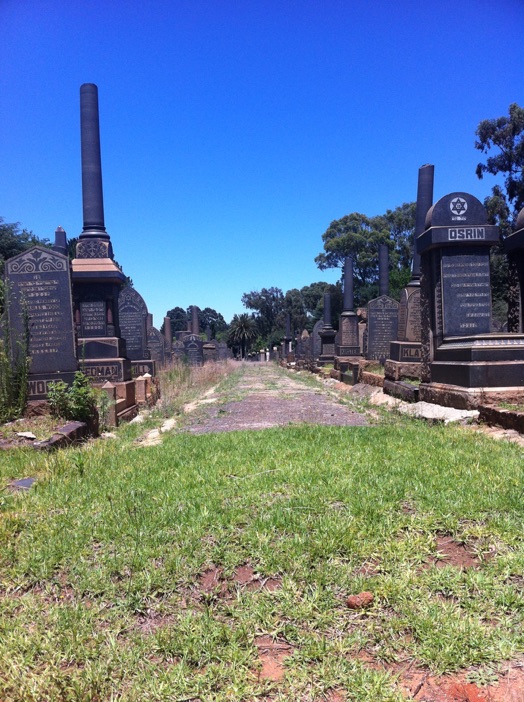
Johannesburg 1912 Suburb by Suburb Research Blog


